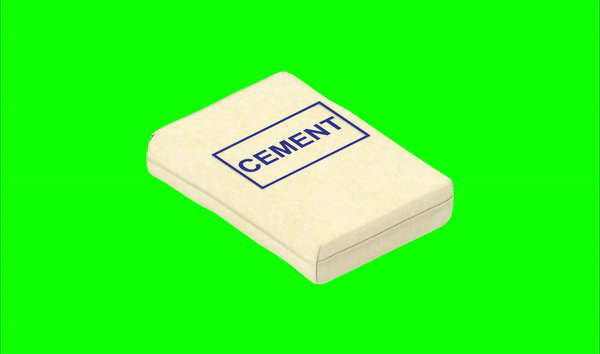PRODUCT SIZE
25kg
GEOLOGICAL PERIOD
Holocene — Cambrian
Present — 550 MYA
COMPOSITION
Dry cement mix
Approximately 2 kg of mass are used per 1m², with the thickness of 1.0 mm
25kg
GEOLOGICAL PERIOD
Holocene — Cambrian
Present — 550 MYA
COMPOSITION
Dry cement mix
Approximately 2 kg of mass are used per 1m², with the thickness of 1.0 mm
GEOLOGICAL BIO
Cement is made by heating and mixing limestone with clay, shale, and optional other materials. Limestone as a Carbonate rock was cyclically distributed through the Cambrian’s warm, shallow-water environments, and continued to distribute throughout the Paleozoic and Mesozoic eras.
Today, as was true for the ancient limestone, bags of “quickcrete” cement rely on water: in the Holocene, such a relationship is announced in bold writing: JUST ADD WATER. A cornerstone of DIY culture, this rapid-cure cement blend achieves a 4000 psi average compressive strength after just 4 hours of curing.
For other cement-based products, see Fiber Cement Board and Cement Masonry Unit.
EXTRACTION / MANUFACTURING PROCESS
Quarry rock (limestone, shale) ︎︎︎ Dry and grind with otherraw materials (clay, sand) ︎︎︎ Mix limestone (containing calcium oxide) with sand, shale or clay (silica and alumina materials) ︎︎︎ Heat mixture in a rotary kiln to form clinker ︎︎︎ (grey marble-sized balls) - cool down clinker - grind and mix with small amounts of gypsum and limestone ︎︎︎ pack and ship
Cement is made by heating and mixing limestone with clay, shale, and optional other materials. Limestone as a Carbonate rock was cyclically distributed through the Cambrian’s warm, shallow-water environments, and continued to distribute throughout the Paleozoic and Mesozoic eras.
Today, as was true for the ancient limestone, bags of “quickcrete” cement rely on water: in the Holocene, such a relationship is announced in bold writing: JUST ADD WATER. A cornerstone of DIY culture, this rapid-cure cement blend achieves a 4000 psi average compressive strength after just 4 hours of curing.
For other cement-based products, see Fiber Cement Board and Cement Masonry Unit.
EXTRACTION / MANUFACTURING PROCESS
Quarry rock (limestone, shale) ︎︎︎ Dry and grind with otherraw materials (clay, sand) ︎︎︎ Mix limestone (containing calcium oxide) with sand, shale or clay (silica and alumina materials) ︎︎︎ Heat mixture in a rotary kiln to form clinker ︎︎︎ (grey marble-sized balls) - cool down clinker - grind and mix with small amounts of gypsum and limestone ︎︎︎ pack and ship
